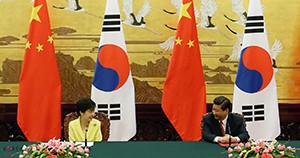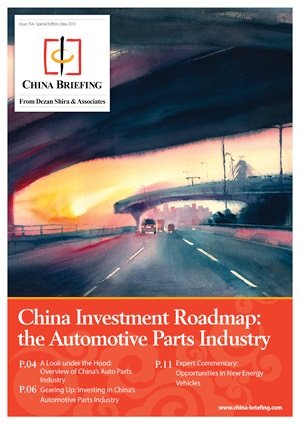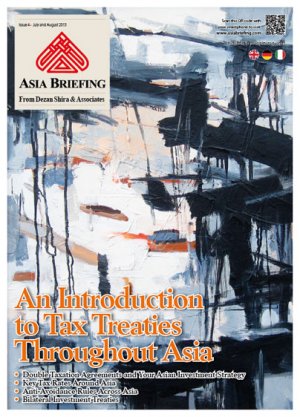The China – South Korea FTA: Background and Details

Op/Ed by Chris Devonshire-Ellis
China and South Korea formally signed their anticipated Free Trade Agreement in Seoul three days ago. Although agreed last year, the official signing of these agreements only took place once translations of the agreed content were checked through by both sides. This typically results in a 4-6 month delay.
In fact, China has been in a rather strange place with South Korea over this FTA. The proposed China-Japan-South Korea treaty stalled following disagreements with Japan concerning disputed islands. It should also be noted that the FTA just signed is for mainland China only. It does not include Hong Kong, which maintains its own agreements, including a Double Tax Treaty with South Korea signed off late last year.
China and South Korea have also signed a “Social Insurance Contribution Agreement“, an interesting document which spells out the exemptions for payment of social welfare by expatriates in each other’s country. Something no doubt the concerned Western expatriates in China would dearly love to have applied to them.
These agreements demonstrate a strong China-South Korea trade picture, and can also be viewed partly as a political rebuff to Japan and to Taiwan, both of whom can be expected to lose some trade volume with China as a result of this FTA. China and South Korea are important trade partners – at US$146.7 billion, China makes up 25 percent of South Korea’s total export volume. Total bilateral trade was worth some US$235.4 billion in 2014. 16 percent of South Korea’s total inbound products during this period came from China. Clearly, South Korea manufactures products that China wants, and it enjoys a healthy trade balance with the PRC.
The China-South Korea FTA shows some promise for domestic Chinese and South Korean companies, and can be expected to boost trade further. Under the agreement, the two sides have reduced tariffs to zero on some 90 percent of all traded goods. That sounds impressive, until one realizes that the actual volume of goods traded between them are limited to a total of 852 Chinese import items–mostly agricultural goods–or seven percent of the total number of products shipped from China in 2013. The deal promotes 637 Korean items, largely industrial products like cars and steel, or eight percent of all Korean goods exported to China last year. The FTA is also being phased in over a two decade period – it is not a sudden overnight free trade bonanza.
This means the deal is not particularly impactful, except upon some agricultural and auto components industries. It should be noted that these industries are both restricted to foreign investment in both countries. As a result, this particular FTA offers little for foreign investors in either country, unless they have a JV with a domestic partner.
However, there are other significant, yet again rather controlled elements, to this FTA. Of interest is the agreement to permit preferential tariffs on just over 300 products manufactured in South Korea’s Kaesong Industrial Complex. This is notable because approximately 120 South Korean companies operate factories there, with some 53,000 employees employed from North Korea, making it an important source of revenue for North Korea’s cash strapped Government.
In summary, the China-South Korea FTA very much has a political slant to it – bypassing Japan and Taiwan to benefit South Korea, and including a sop that keeps the Kim regime ticking over to the North. The South Korean Government has stated that the FTA marks an entry point for a large number of South Korean companies to the world’s largest consumer market. South Korea anticipates the FTA will boost its real gross domestic product by 0.96 percent and will create 53,800 new jobs in the next 10 years.
In essence, its a deal that provides stability in the agricultural and auto industries for both nations, but carries little else of interest for global businesses operating in the region. It benefits Chinese farmers, and South Korea’s auto industry, and may be of some benefit to foreign investors with JVs in these markets – over time. Talk of it being of immediate interest to foreign investors in China or Korea is way off the mark.
However, looking beyond the current deal and its long 20 year implementation period, the FTA is also set to be expanded two years after it enters into effect (even after signing, it still has to be ratified), as both China and South Korea have agreed to resume negotiations on the services sector to push for further liberalization as part of this new, but somewhat political and essentially solely bilateral, agreement. There’s not much here for anyone else.
|
Chris can be followed on Twitter at @CDE_Asia. Stay up to date with the latest business and investment trends in Asia by subscribing to our complimentary update service featuring news, commentary and regulatory insight.
|
![]()
Using China’s Free Trade & Double Tax Agreements
In this issue of China Briefing, we examine the role of Free Trade Agreements and the various regional blocs that China is either a member of or considering becoming so, as well as how these can be of significance to your China business. We also examine the role of Double Tax Treaties, provide a list of active agreements, and explain how to obtain the tax minimization benefits on offer.
 China Investment Roadmap: the Automotive Parts Industry
China Investment Roadmap: the Automotive Parts Industry
In this issue of China Briefing, we present a roadmap for investing in China’s automotive industry. We begin by providing an overview of the industry, and then take a comprehensive look at key foreign investment considerations, including investment restrictions, tax incentives and manufacturing requirements. Finally, we discuss foreign investment opportunities in a part of the industry that receives substantial government support: new energy vehicles.
 An Introduction to Tax Treaties Throughout Asia
An Introduction to Tax Treaties Throughout Asia
In this issue of Asia Briefing Magazine, we look at the various types of trade and tax treaties that exist between Asian nations. These include bilateral investment treaties – which are somewhat unfashionable, yet still the major focal point of bilateral trade between many smaller emerging nations – and also the meatier double tax treaties and free trade agreements that directly affect businesses operating in Asia.
- Previous Article State by State: China and Illinois Trade
- Next Article Présentation des Nouvelles Zones de Libre-Échange, Partie 4: Fujian










